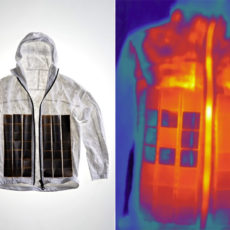
DOOM running on a thermal imaging camera is a novel way to play the game, but Purdue University researchers HADAR could be a game changer for vehicles and robotics. Put simply, HADAR (Heat-Assisted Detection and Ranging) merges thermal physics, infrared imaging and machine learning to pave the way to let AI see through pitch darkness like broad daylight.
Active sensors such as LiDAR emit signals and subsequently receive them to collect 3D information about a scene. HADAR essentially recovers the texture from cluttered heat signals and then accurately disentangles temperature, emissivity and texture, or TeX, of all objects in a scene. This means it’s capable of seeing texture and depth through the darkness as if it were day and also perceives physical attributes beyond RGB, or red, green and blue, visible imaging or conventional thermal sensing.
No products found.
Our work builds the information theoretic foundations of thermal perception to show that pitch darkness carries the same amount of information as broad daylight. Evolution has made human beings biased toward the daytime. Machine perception of the future will overcome this long-standing dichotomy between day and night,” said Zubin Jacob, the Elmore Associate Professor of Electrical and Computer Engineering.





